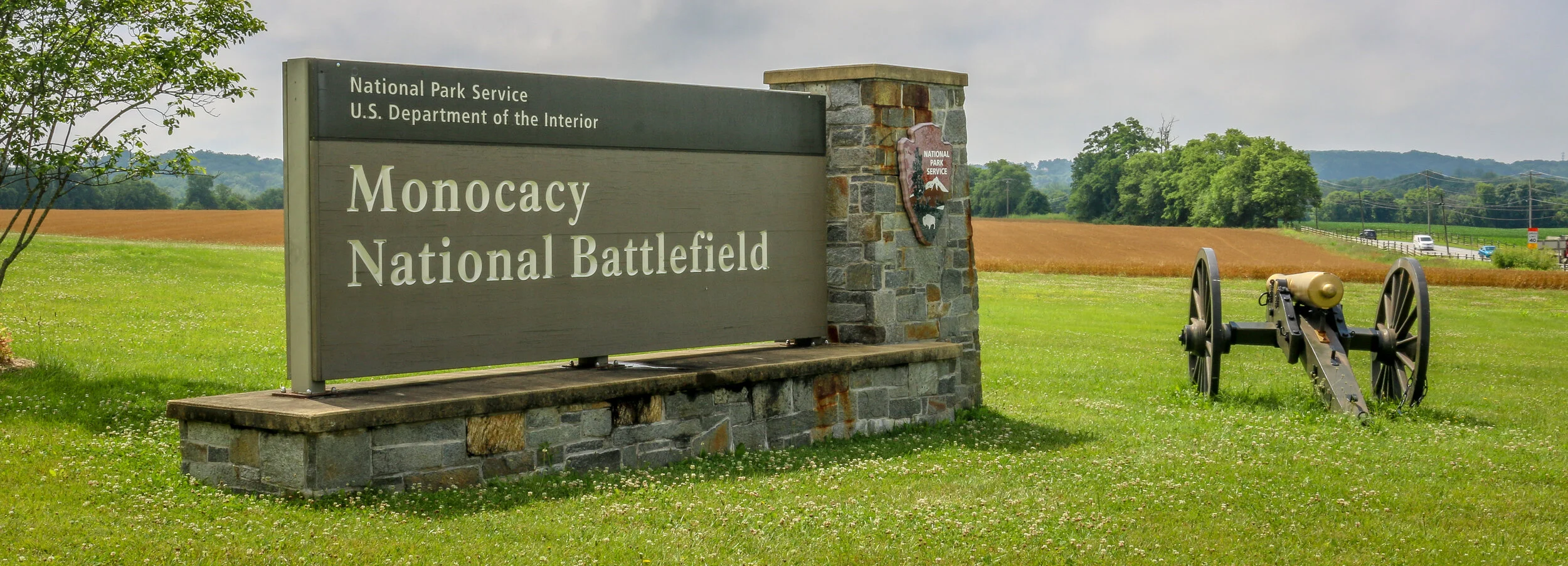The Battle of Monocacy is a bit of an outlier in that it wasn’t really a major battle of the Eastern Theater of the Civil War, but a minor one with major implications. While Generals Grant and Lee were engaged in the final grappling of the war around Petersburg, south of Richmond, Lee wanted a distraction to pull some of Grant’s army away. He attempted this by sending General Jubal Early to go on the offensive and attack into Union territory, the third Confederate invasion of the North during the war. Early was sent with 15,000 men to threaten Washington D.C. and, if possible, to raid the prison camp at Point Lookout and free the Confederate soldiers being held there. Lee also knew that a presidential election was looming and he hoped that another invasion of the North might bring about the defeat of Lincoln and a favorable end to the long and brutal war.
Early’s army crossed the Potomac River into Maryland on the 4th of July, 1864 and marched past Sharpsburg, the site of the Battle of Antietam two years earlier. You can’t march 15,000 infantry troops across a state without anyone noticing, and word quickly got to General Lew Wallace who was then the Union commander in Baltimore. Wallace gathered what men he could muster and quickly set off towards the west. Thinking quickly, Wallace decided to head towards Monocacy Junction, just south of Frederick, Maryland. He didn’t know where the Confederates were headed, but this point would allow his troops to defend the Georgetown Pike to Washington, the National Road to Baltimore and the Baltimore and Ohio Rail Line. If he got there first, he could strategically place his men along the Monocacy River and defend all three of those routes which crossed the river at that point. He arrived in time to dig in and establish a line of defense.
On the morning of July 9th, Confederate troops began marching towards Monocacy. They assembled their artillery on the Best Farm and began firing on the Union defenses. Deciding against a frontal assault, Early sent his troops downriver to cross by way of a ford and assemble on the Worthington Farm. Wallace shifted his men to meet the Confederates, assembling his men on the Thomas Farm nearby. Heavy fighting would occur for the rest of the day across the fields separating the two farms. Late in the day, the heavily outnumbered Union troops couldn’t hold out any longer. They withdrew from the battlefield leaving the Confederates unimpeded to begin their final advance on Washington.
The battle had cost them a full day though, and that day would have a profound impact on their mission. The Union army was able to load men onto steamships and get them north to Washington in time to meet the approaching Confederates. By the time Early and his men entered the city on July 11th the defenses had been shored up and the Capital City would not fall. But that’s the story of the next installment of the Civil War Chronicles which you can find at the link below.
The photos below come from a recent visit to Monocacy National Battlefield Park just south of Frederick Maryland - site of the “Battle that Saved Washington”. Civil War Chronicles will trace the major battles of the Eastern Theater of the war through photos and brief histories. Click on any photo to enlarge it. All photos are available for sale and licensing. For more information, check out the National Park Service’s Monocacy Battlefield website HERE.

